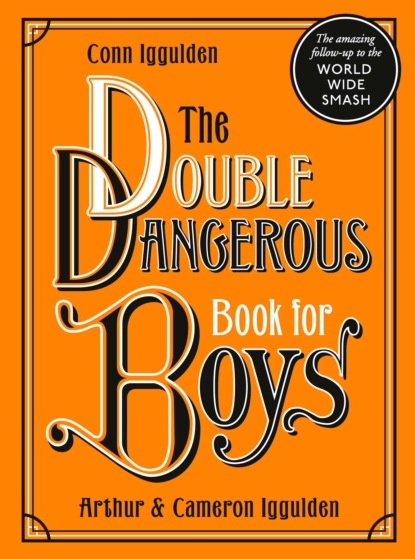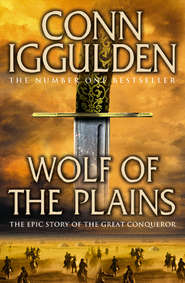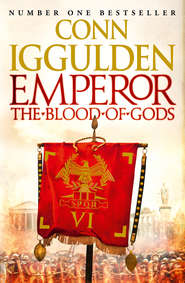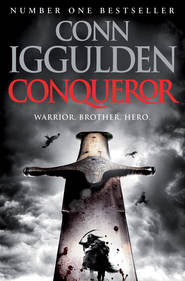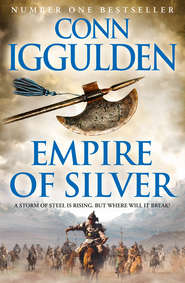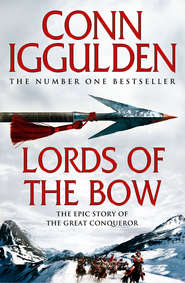По всем вопросам обращайтесь на: info@litportal.ru
(©) 2003-2024.
✖
The Double Dangerous Book for Boys
Настройки чтения
Размер шрифта
Высота строк
Поля
As the first Tudor, King Henry VII made changes in 1489. A pound by weight of sterling silver had been a unit of measurement for centuries, but no pound coin had ever been issued. Henry Tudor issued the first – and as the design included the king on a throne, called it a sovereign. Double- and even triple-weight sovereigns were also issued. Sovereigns have been issued by every monarch since then, a practice that continues today. They are still made of gold and are very valuable.
The first pound coin – the ‘sovereign’
Universal History Archive/UIG/Bridgeman Images
The first shillings, coins worth twelve pennies, were produced by Henry VII and known then as ‘testoons’ or ‘head-pieces’ – as they had his head printed on them. He and his son Henry VIII debased the level of silver in the coins, a practice that was just too tempting. Mixing silver with cheaper metals meant two coins could be produced for the same amount of silver – or four, or twelve … The history of coins is also the history of forgery and cheating. Queen Elizabeth I recalled many of these cheap coins and reissued higher-quality ones.
The explosion of commerce in the Elizabethan age required sixpence and threepence coins marked with a rose, as well as the shilling, groat, penny, halfpenny and farthing. She also issued crowns, worth five shillings, and half-crowns, worth two shillings and sixpence. They were issued from the brief reign of her older brother Edward to 1967.
Elizabethan shilling – a very modern coin
Granger Historical Picture Archive/Alamy Stock Photo
In 1660, King Charles II was restored to the throne after the years under Cromwell. In 1663, the first machine-produced coins were made, consigning hand-stamping to history. Coins could then be milled with great precision. Some even had the words ‘Decus and Tutamen’ cut into the edge – ‘an ornament and a shield’ – to protect them from being clipped. The gold used in these coins came from Guinea in Africa, so they became known as the first guineas. Originally, they were worth twenty silver shillings. Later, they became worth twenty-one shillings, or a pound and a shilling. Guineas are still used in some racehorse auctions, where it is possible to bid a thousand pounds and have the bid raised with the word ‘guineas’ – one thousand and fifty pounds. Charles II also issued copper coinage for the first time and tin/copper coins to help the Cornish tin industry.
In 1797, the government issued copper pennies, though when copper became scarce, they changed to bronze around 1860. Still called ‘coppers’, bronze halfpennies, farthings and even third-farthings were issued as the 19th century went on.
At the start of the 20th century, the currency was stable and produced by a royal mint. King Edward VII and then King George V had their image on coins ranging from a third of a farthing up to a five-pound gold coin. Over time, smaller coins began to be less useful. The ‘inflation’ of currency meant that prices went up and money was not worth as much. Farthings were dropped around 1960.
Queen Elizabeth II began her reign in 1952 with a currency based around the number twelve, with a history stretching back to ancient Rome. When the symbols for pounds, shillings and pence were written, it was always ‘£, s and d’ – the last, as we’ve seen, for denarius. In 1970, Britain still used the halfpenny, the penny, the threepenny bit, the silver sixpence, the shilling, the florin (two-shilling piece), the half-crown (two shillings and sixpence), the crown (five shillings), the half-sovereign (ten shillings), the sovereign (twenty shillings or £1) – and the guinea of twenty-one shillings. My mother told a story of when she was a young girl and found her father asleep in an armchair. Kneeling beside him, she whispered, ‘Can I have a half-crown?’ into his ear. When there was no response, she crept around to the other side and whispered, ‘Can I have a crown?’ into that ear. There was silence for a time, then without opening his eyes, he murmured, ‘Go back to the half-crown ear.’
In 1971, the government of Prime Minister Edward Heath formally abolished the old coin values and went to a decimal system (based on the number ten). He hoped to modernise Britain, breaking those ties to the ancient past. New coins were issued, with the five-pence piece referred to as a shilling to help with the transition. A pound was redesignated as 100 pennies, so that the 5p piece was still one-twentieth. New green one-pound notes were issued, replaced in 1983 by the first pound coins. Later, two-pound coins were issued for normal use. Some special-edition five-pound coins are produced each year and gold sovereigns are still minted. The bank notes at the time of writing are for five, ten, twenty and fifty pounds.
It is worth noting that these are artificial systems. Whether a pound (or a dollar) has a hundred pennies or 60, 240 or even 360 is a matter of choice. We chose to keep 60 minutes in an hour, 360 degrees in a circle and 24 hours in a day. Yet some numbers are just more useful than others. 240 has 1, 2, 3, 4, 5, 6, 8, 10, 12, 15, 16, 20, 24, 30, 40, 48, 60, 80, 120 and 240 itself as factors – 20 in all. In comparison, 100 has 1, 2, 4, 5, 10, 20, 25, 50 and 100 itself – just nine factors. In that way, 240 is more useful than 100, both in trade and in teaching maths.
The history and stability of a country can be read in its currency – and knowing the road behind can be useful in judging the road ahead. Of course, it is possible that before the 21st century comes to an end, all transactions will have become digital and coins will have gone the way of the dinosaurs. That would be a shame – there is something comforting about a handful of change clinking in a pocket – along with two thousand years of history.
FLYING MACHINES (#ulink_f0225a6c-2edc-5b7e-a763-37759413437a)
Rubber-band aeroplanes are as old as, well, rubber bands. You could use the skills in this chapter to make a simple one, with a propeller. That’s part of the reason why we’ve put this in the book: it’s astounding what you can do with balsa wood, superglue and ordinary thread. The other reason is that an ‘ornithopter’ flaps its wings. They’ve been around since the 19th century as toys, but they’re still impressive. You can buy a kit or a complete plastic one easily enough, but it is immensely satisfying to make. At the time of writing, the world record for indoor rubber-band-powered flight is 21 minutes, 44 seconds, held by Roy White of America. Our ornithopter will fly for just a few seconds, but it’s still worth it.
YOU WILL NEED
Needle-nose pliers
Superglue
Thread
Elastic bands
A razor blade or art knife
Tissue paper or a supermarket plastic bag
Wire. Paperclips will do, but we used 1/16in brass rod, because it felt a little stronger
Electrical wire (for the plastic covering)
Oil or grease
⅛in aluminium tubing
A few coffee-shop wooden stirrers (or ice-lolly sticks)
A hard plastic bead
Spars of balsa wood
Note: ‘Super’ or ‘crazy’ glue refers to the group of fast-setting cyanoacrylate glues. Although it is apparently a myth that they were developed to close battlefield wounds, they are sometimes used in that way today, to seal cuts where it would be difficult to stitch. In other words, superglue sticks well to balsa wood, but it sticks amazingly well to skin. In the course of making this ornithopter, we stuck our fingers together many times – and our fingers to other things, including the tube of glue itself. Acetone is your friend when it comes to removing superglue, but please try to avoid pulling your fingerprints off. They do grow back, however. There is clearly potential for injury here, so find a dad and make him help, but don’t let him do all the tricky bits. Remember: scars are fine. Having to go through life attached to a superglue tube is not.
In balsa wood, you’ll need a couple of spar pieces to act as the body and a couple of thin spars to form the backbone of the wings. Hobby shops sell balsa in all shapes and sizes. It’s not expensive stuff, so you should be able to get a selection for a few pounds. The point of having more than you need is (a) for when you tread on a wing spar and snap it, and (b) because, as you’ll see, balsa is really useful. It won’t be wasted.
We formed the main body with four pieces. The thin spars are ⅛in thick, ½in wide and 7in long (4mm × 13mm × 17.5cm). The thick ones are ½in × ½in square and 2in long (13mm × 13mm × 50mm). We added blocks of ½ × ½in batten beneath as well, to hold the rubber band later.
Up to this point, it’s all symmetrical. Choose an end to be the front and cut three pieces of aluminium tube. You could use brass or plastic. It should be the right size to allow your wire to pass through.
With a razor blade or a hacksaw, we cut all three tubes the same length – ⅝in (16mm). As a general principle, it’s worth sanding the rough edges. Two tubes go on the top, parallel to one another, while the third goes at the bottom. It’s vital they don’t come loose, so we cut a groove for the bottom one, glued them all in place, then wound cotton thread around the entire assembly. Cyanoacrylate glues essentially form a hard plastic as they set, with a little heat given off. The result is impressive and incredibly strong. Honestly, the application of superglue on balsa was very satisfying. Once or twice when fiddling, a crack was heard. A dab of glue on the hairline crack, good as new.
The crank is the only tricky part of making this, so here it is. The rubber band will be held by one end and wound at the front. (We did try a rear-winder on the first attempt, with a cork attached. That actually worked pretty well, but we’ll keep this simple.)
The problem is how to turn that rubber band rotation into an up-and-down motion for the wings. A spinning disc doesn’t work – it’s impossible to get the wings to act together. What works is a staggered crank, which lifts two rods at slightly different times.
The wire comes out of the bottom tube, leaving enough room for a plastic bead (fake pearls work well). With the needle-nose pliers, make a 90-degree bend to the left, looking at it from the front. It should be as sharp as you can make it – you do not want that bead to work its way around the corner. After ¼in (6mm), make another 90-degree bend, heading away from the main body. Leaving enough space for a small wooden batten – say ¼in – turn back in a 90-degree bend, parallel with the first bend.
So far so good, but that upside-down ‘U’ has to be twisted to create an angle of 60 or 70 degrees.
Looking down the crank, it will look like this:
If you bend it the wrong way, the wings will not work together, no matter what you do. It took us a ridiculously long time to figure that out.
On to the wings. You’ll need two narrow 8in (200mm) balsa spars for this. We’ve heard of one built entirely of wooden coffee stirrers, which isn’t a bad idea, though balsa is perfect. Lightness is crucial – the less weight the better.
The two wing wires are bent twice at 90 degrees. One end will go into the twin tubes from before, as shown below. More thread and glue will keep the wires stable. We cut the wires so that a little bit poked out at the back of the tubes. With the pliers, you can twist those ends up a fraction. It stops the wings falling out all the time.
That is the hardest part over with, believe it or not. There might be some fiddly bits to finish, but the main job is done.
JOINING THE CRANK AND THE WING SPARS
This is where the wooden coffee stirrers or ice-lolly sticks cut lengthways come in. You’ll need to drill a tiny hole at each end. Remember to use scrap wood underneath. Our first stick had holes 2¾in (70mm) apart for the inner batten, with a fraction more – 72mm – for the outer one. The plastic stoppers are vital to stop it all falling apart. Cut a piece of electrical wire and use pliers to tug out the copper core, leaving only the plastic sheath. You can then cut that into small pieces and wiggle them on.
The inner batten sits at the bottom of the ‘U’ on the crank – the first position. Line up the highest position of the crank with a wing position of no higher than 40 degrees up from horizontal. Any higher and it can be unstable. Mark your holes and drill. Once attached, you should be able to turn the crank and watch one wing rise and fall through its entire motion. If for some reason it doesn’t work – which happened to us on the second run-through – the problem will lie with the length between the holes or the angle of the wire crank. Adjust – half of making something is fiddling around when the thing just refuses to work and you can’t see why.
Once you have one wing rising and falling on the crank’s turn, you can attach the second. This outer batten sits on the part of the crank furthest from the main body – the second position. You’ll need more bits of electrical plastic sheath to hold it in place. Line up both wings so that they’re symmetrical at the midpoint of the sequence, mark your holes and drill. Be prepared to drill a line of holes and try each one if it doesn’t quite work. Keep your temper. You will be proud you did – and ashamed if you didn’t.
Once you have the wings moving smoothly, you’ll need to attach a hook at the back to hold the elastic band. The crank will wind it, so this is just a piece of wire, held with thread and glue. Something like this:
For the tail, we first tried a short wide one, which was completely useless. This bird is front-heavy, so it needs a long tail to give it a chance of stability in the air. With a main body 7in long, our best tail was 8in (20cm). We bent a narrow wire into a shape of an isosceles triangle with an apex of 45 degrees, and fixed coffee stirrers to it with glue and a few turns of thread. The top wire was then fixed with glue and thread to the main body. It’s trickier to wind the thread with the wings attached, so the tail should go on first.





